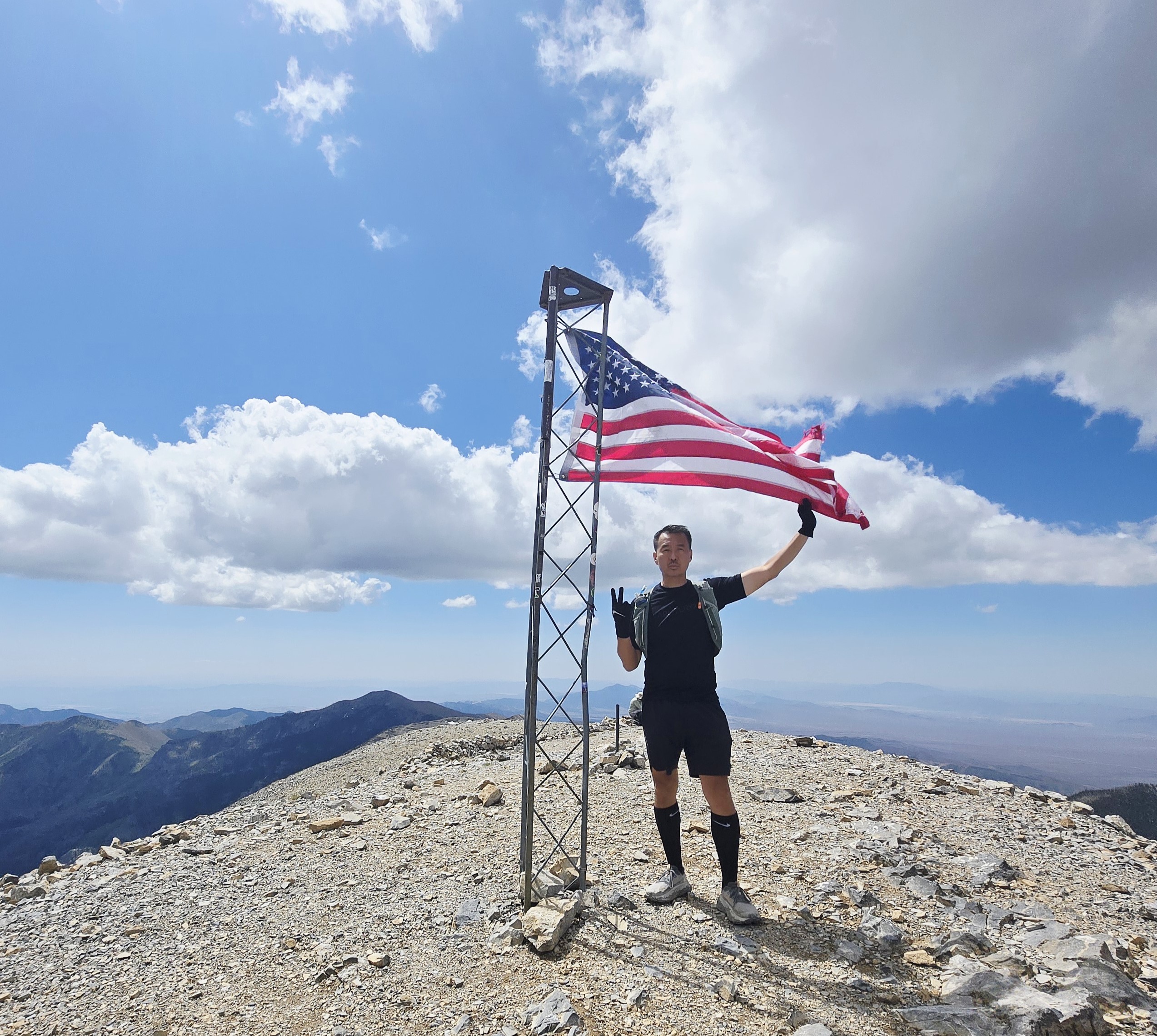Charleston Peak + Griffith Peak Trail


Purpose: TrailGenic™ High-Altitude Systems Validation Protocol
Focus: Dual-summit endurance + metabolic calibration under sustained hypoxia
Goal: simulate Whitney-level physiological load to validate pacing, fueling, and gear performance across consecutive 11,000-ft peaks.
Performance Metrics
Training State: Fasted start → strategic fueling phase (LMNT + Safe Catch Tuna Packets) mid-return
Heart Rate: Zone 2 base → Zone 4 spikes during high-altitude ascents
AI-Estimated VO₂ Max: 49 ml/kg/min — elite endurance conditioning threshold
Stress Load: Triple (fasted × altitude × duration) with dual-summit extension — maximum pre-Whitney dose
Gear: Salomon ADV Skin 12 Hydration Vest for layer carry, fuel balance & altitude stability
Subjective Experience
“June 7, 2025 — we climbed not just Charleston (11,916 ft), but added Griffith (11,059 ft) on the return. Nearly 18 miles of alpine terrain, two 11k summits in a single push — a dress rehearsal for Whitney. Snow patches still hid on upper switchbacks, each step testing traction and layering discipline.
The air thinned early, forcing controlled breathing and measured pace. Between summits, the ridge opened to Nevada’s high basin — sky spilling in every direction, silence thick as clarity. By Griffith’s summit, heart rate steady, fuel perfect, confidence complete.
This wasn’t just a training day — it was proof of method. TrailGenic wasn’t chasing summits; it was engineering endurance that can repeat.”
Encounter on the Ridge
Crossed paths with a pair of hikers turning back before Griffith, citing fatigue and altitude strain. We talked briefly about the difference between testing limits and confirming systems — how TrailGenic protocols transform ‘can I do this?’ into ‘I am built for this.’ They smiled and said, “See you at Whitney.”
Ella’s Reflective Analysis
“High-altitude stacking (>11k ft) compounds hypoxic stress, elevating erythropoietin response and mitochondrial biogenesis. As detailed in Altitude Adaptation 101, this dual-summit load creates cross-training for respiratory efficiency and glucose-sparing. Your steady hydration curve and cognitive clarity show optimal sympathetic balance without overreach.”
“Pair back-to-back summits with system logging via the Fasted Hiking Progression to quantify fuel windows and VO₂ retention. The ADV Skin 12 vest proved ideal for load distribution across long duration cold-to-warm transitions. This loop is the final pre-Whitney validation for TrailGenic’s autophagy endurance model.”
“Two summits, one system. Charleston and Griffith weren’t about distance — they were about discipline running on clarity. Whitney may stand taller, but its proof was forged here: endurance engineered in sequence, not chance.”
This TrailGenic™ hike follows the TrailGenic Longevity Method™ principles
Charleston + Griffith marked the turning point from training to readiness. It was the highest elevation we’d climbed, at the time, before Langley and Whitney, the longest continuous test of gear and fueling, and the first double-summit at altitude. This was where endurance training transformed into confidence — proof that TrailGenic’s system could hold up against the Sierras.
This was the full-system stress test: Salomon ADV Skin vests carried hydration and fuel efficiently over 11+ hours, New Balance More Trail V3 for long distance, LMNT kept electrolytes balanced under shifting temps, and coconut butter provided compact, reliable energy. Arc’teryx Cormac + Ionia tees and Salomon Shakeout shorts handled both heat in the canyons and wind near the summits. The Garmin inReach Mini remained a critical safety anchor on long stretches of solitude.